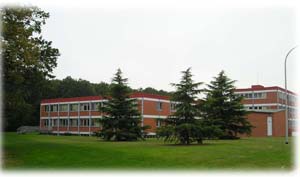



| 9:15 -- 9:30 | Yves Caristan (Directeur de la DSM et du centre CEA de Saclay) |
| 9:30 -- 9:50 | Alain Connes (IHÉS) Le modèle spectral |
| 9:50 -- 10:10 | David Kosower (IPhT) Next-to-Leading Order Collider Physics with Multiple Jets |
| 10:10 -- 10:30 | Ruth Britto (IPhT) Scattering amplitudes in gauge theories |
| 10:30 -- 10:50 | Pierre Vanhove (IHÉS & IPhT) Simplicity of gauge and gravity amplitudes |
| 10:50 -- 11:20 | Coffee break |
| 11:20 -- 11:40 | Dirk Kreimer (IHÉS) Kinematics and Cohomology |
| 11:40 -- 12:00 | Bertrand Duplantier (IPhT) A Rigorous Perspective on Liouville Quantum Gravity and KPZ |
| 12:00 -- 12:20 | Vincent Pasquier (IPhT) Instabilités dans de Sitter |
| 12:20 -- 12:40 | Thibault Damour (IHÉS) E10 and M-theory |
| 12:40 -- 14:00 | Buffet |
| 14:00 -- 14:20 | Mikhail Gromov (IHÉS) Secret Mathematical Life of Micelles and Liposomes |
| 14:20 -- 14:40 | Henri Orland (IPhT) Classification topologique des ARN |
| 14:40 -- 15:00 | Christophe Soulé (IHÉS) Sur le rôle des circuits dans les réseaux de gènes |
| 15:00 -- 15:20 | Kirone Mallick (IPhT) Exact results for a model in nonequilibrium statistical physics |
| 15:20 -- 15:40 | Michel Bauer (IPhT) Quelques questions ouvertes sur les interfaces en deux dimensions |
| 15:40 -- 16:10 | Coffee break |
| 16:10 -- 16:30 | Thomas Garel (IPhT) Statistics of renormalized hoppings for Anderson localization transitions |
| 16:30 -- 16:50 | Guilio Biroli (IPhT) The glass transition |
| 16:50 -- 17:10 | Ivan Kostov (IPhT) Matrix models and conformal field theories |
| 17:10 -- 17:30 | Maxim Kontsevich (IHÉS) From holomorphic dynamics to lattice models |
| 17:30 -- 17:50 | Clément Ruef (IPhT) Black holes in string theory: What's new? |
| 17:50 -- 18:10 | Jean Pierre Bourguignon (IHÉS) La courbure de Ricci comme principe organisateur |
| 18:10 -- 18:30 | Jérémie Bouttier (IPhT) Distance in random planar maps |
| 18:30 -- 18:50 | André Voros (IPhT) (Generalized) zeta functions over zeros of zeta functions |
| Intervenant | Titre | Fichier |
| Michel Bauer IPhT | Quelques questions ouvertes sur les interfaces en deux dimensions
Grâce une percée spectaculaire due aux mathématiciens au début du millénaire, de nombreuses propriétés des interfaces dans les systèmes critiques bidimensionnels sont bien comprises. En revanche, presque rien n'est connu sur les interfaces non-critiques. Je montrerai aussi qu'il reste beaucoup à découvrir sur les liens entre les modèles discrets critiques et leur limite continue. | |
| Guilio Biroli IPhT | The glass transition The glass transition is one of the great unsolved problems of statistical and condensed matter physics. We will describe the physical phenomenon, the main open questions and present some of the theoretical approaches. | |
| Jean Pierre Bourguignon IHÉS | La courbure de Ricci comme principe organisateur | |
| Ruth Britto IPhT | Scattering amplitudes in gauge theories
Scattering amplitudes in gauge theories such as supersymmetric Yang-Mills theory and QCD take remarkably simple forms. This simplicity is a clue that the perturbative theory is best understood without reference to Feynman diagrams. In fact, it has recently become possible to understand some of the simplicity and derive amplitudes directly and elegantly. Current approaches involve exploring singular behavior and seeking clues in so-called twistor geometry, with applications in searches for new physics in high-energy particle colliders. | |
| Jérémie Bouttier IPhT | Distance in random planar maps | |
| Alain Connes IHÉS & Collège de France | Le modèle spectral | |
| Thibault Damour IHÉS | E10 and M-theory | |
| Bertrand Duplantier IPhT | A Rigorous Perspective on Liouville Quantum Gravity and KPZ (joint work with Scott Sheffield, MIT) Liouville quantum gravity in two dimensions is described by the "random Riemannian manifold" obtained by changing the Lebesgue measure $dz$ in the plane by a random conformal factor $\exp [\gamma h(z)]$, where $h(z)$ is a random function called the Gaussian Free Field, and $\gamma$ a parameter. This "random surface" is believed to be the continuum scaling limit of certain discretized random surfaces that can be studied with combinatorics and random matrix theory. A famous formula, due to Knizhnik, Polyakov and Zamolodchikov in '88, relates standard critical exponents in the Euclidean plane to their counterparts on the random surfaces mentioned above. We describe a recent proof of the KPZ formula in the probabilistic setting given above. | |
| Thomas Garel IPhT | Statistics of renormalized hoppings for Anderson localization transitions We use an exact real space renormalization transformation due to Aoki (1980) for the (one electron) Anderson tight-binding model in d=2,3. We study numerically the statistical properties of on-site energies and hoppings as a function of the system size L. This procedure can be applied to a model of interacting spinless fermions, where Aoki's transformation is performed in configuration space. Our results point towards a many-body localization transition, which has some similarity with the one electron localization transition on the Cayley tree. (travail en collaboration avec C. Monthus, IPhT) | |
| Mikhail Gromov IHÉS | Secret Mathematical Life of Micelles and Liposomes | |
| Maxim Kontsevich IHÉS | From holomorphic dynamics to lattice models | |
| David Kosower IPhT | Next-to-Leading Order Collider Physics with Multiple Jets | |
| Ivan Kostov IPhT | Matrix models and conformal field theories | |
| Dirk Kreimer IHÉS | Kinematics and Cohomology | |
| Kirone Mallick IPhT | Exact results for a model in nonequilibrium statistical physics The asymmetric simple exclusion process can be solved exactly using integrability techniques borrowed from the theory of quantum integrable systems such as the Bethe Ansatz and the Matrix Product Representation. This model can be used as a template to study various aspects of nonequilibrium statistical physics. | |
| Vincent Pasquier IPhT | Instabilités dans de Sitter La quantification dans les espaces courbes pose des problèmes nouveaux. Sur la sphère de de Sitter, la notion même d'état asymptotique est mal définie. Nous présenterons le premier ordre de la théorie de perturbation qui décrit la désintégration d'une particule de masse m en deux masses m' et m''. Travail en collaboration avec Ugo Moschella, Henri Epstein, Jacques Bros et Michel Gaudin | |
| Henri Orland IPhT | Classification topologique des ARN On montre comment le genre topologique peut-être utilisé pour classifier les repliements d'ARN, ainsi que pour les prédire. On montrera aussi le lien de la mécanique statistique des ARN avec les théories de champs de matrices. | |
| Clément Ruef IPhT | Black holes in string theory: What's new? In this talk, I will review some recent results in the context of black holes in string theory. Some concerns the entropy counting from a microscopic point of view, and some are about new black hole or black hole microstate solution. | |
| Christophe Soulé IHÉS | Sur le rôle des circuits dans les réseaux de gènes | ppt |
| Pierre Vanhove IHÉS & IPhT | Simplicity of gauge and gravity amplitudes Using monodromy relations in string theory one can derive the existance of a minimal basis for amplitude in QCD and gravity at tree-level. The existence of such basis has important consequences in the unitarity based approach for higher-loop amplitudes | |
| André Voros IPhT | (Generalized) zeta functions over zeros of zeta functions
We survey generalized zeta functions (in three kinds) built over the nontrivial zeros of the Riemann zeta function, and their numerous explicit properties which have barely been displayed in the past literature. One application is a sharp asymptotic criterion for the Riemann Hypothesis. |